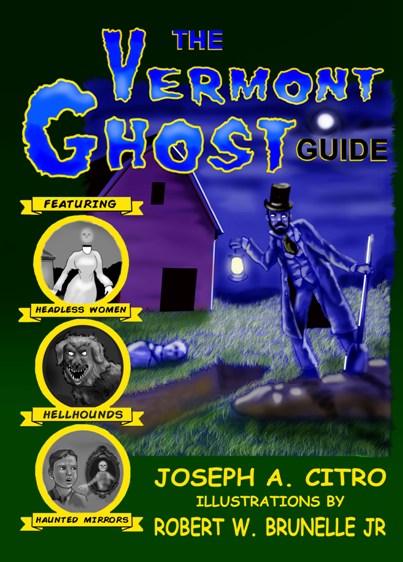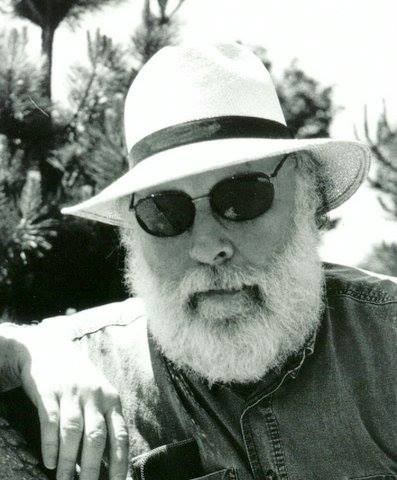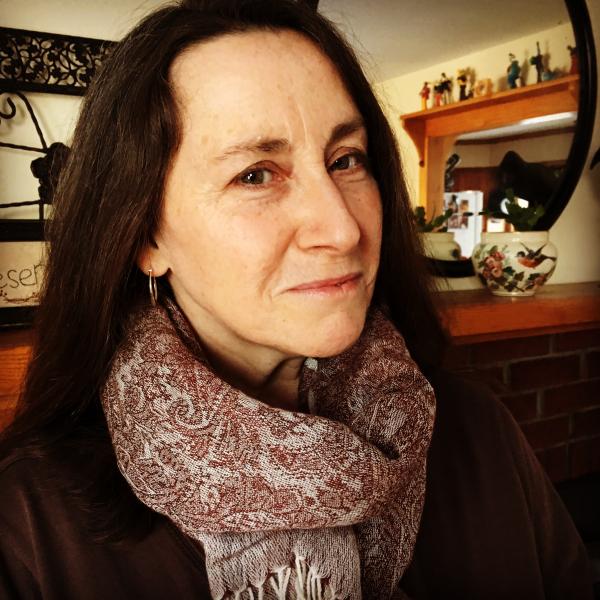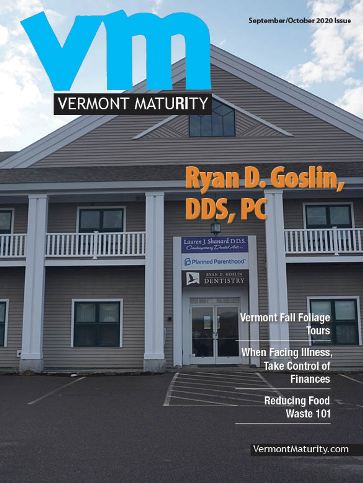“Ghost stories are good for us. Science says getting spooked has real world benefits. Luckily Vermont has plenty of haunting tales.”
Clover Whitham
With a barrage of scary headlines in the daily news, do we really need ghost stories? Science and fans of paranormal tales say we do.

A recent study reiterated what has long been known on some level: Scary stories help us deal with real world fright. Researchers found that fans of horror films have shown greater resilience during the Covid-19 pandemic.
Thea Lewis, author and creator of Queen City Ghostwalk, knows that’s why many are drawn to her haunted tours and books.
“It’s a really nice chance for people to give voice to their fears by participating in other things that are scary, but aren’t the actual things that we’re all super scared of, like the uncertainties of a virus or an election,” Lewis said recently about ghost stories. She said her haunted tour traffic increased in 2009 during the financial crisis.
Joseph A. Citro, who also documents paranormal tales from Vermont and New England, reminds us that interest in the supernatural far predates our modern anxieties. While paranormal entertainment has seen a boom in the last two decades, nearly two centuries ago Spiritualism gripped the region.
Citro sees spooky tales as more than a fun fright; they’re a chance to think about something beyond ourselves.
“We all live in uncertainty, constantly,” Citro said. “When we allow our minds to wander in that direction we might ask ourselves: Do we somehow survive this Death Thing or not? Ghost stories tell us that we do and keep alive the hope that death is not the end of life. Religion does the same thing, when you think about it.”
Stay With the Ghosts
Luckily, if you’re looking for a new scare, there are plenty of spooky local legends.
Vermont certainly has its share of haunted inns. The Green Mountain Inn makes no effort to hide its supernatural occupant; his story is even detailed on the resort’s website.
Boots Berry, as he was called, was born in the inn in 1840, the son of a chambermaid and horseman. Berry followed in his father’s footsteps to become a horseman at the same inn. He became a local hero when he saved the passengers aboard a stagecoach hurtling toward danger behind horses careening down Main Street.
The story goes that Berry was so lauded for his heroics that he never had to buy his own drink again, but he knocked back too many and eventually Berry lost his job at the Inn. Berry wandered the country, learned to tap dance in a New Orleans jail and eventually found his way back home to Stowe, the story goes.
The former horseman may have been downtrodden, but he still had a heroic bent. In 1902 he saved a young girl who was trapped on the roof of the Green Mountain Inn during a snowstorm. He used his intimate knowledge of the building to rescue and deliver the girl to safety, but then he slipped and fell to his death. During storms some say you can still hear Boots Berry tap dancing on the roof of the inn where he was born and where he died.
Other landmarks in Stowe, and many other inns, have their own ghost stories.
Who Lives Here?
Inns are far from the only haunts suspected of hauntings. Many grand, old buildings come with spine-tingling tales. The majestic Greek Revival mansion overlooking Lake Champlain in Burlington certainly has all the makings of a good thriller: Captivating architecture, a fascinating former inhabitant and a touch of tragedy.
The College Street house was built in 1841 by Timothy Follett. To call Follett a prominent citizen would be an understatement. He was a lawyer and a county judge by his early 20s, before he got into the Lake Champlain shipping business. He also had a hand in the lumber industry and later railroads. Eventually he lost the race for railroad dominance and with it his fortunes. Follett’s mansion ended up in the hands of his business rival.
“The result was that the Judge lost the presidency of the Rutland and Burlington (railroad), his money, his health, and finally his mind. His days ended in a local sanitarium in 1857,” as Ralph Nading Hill wrote in Vermont Life in 1981.
Some say Follett roams the home he built now that he’s free from its financial burden.
Others believe it is the spirit of Lorraine Follett, Timothy’s wife, who is the unseen force responsible for turning on and off lights in the building, which is now the headquarters of Pomerleau Real Estate.
Thea Lewis includes the Follett House in some of her tours. After one tour, a participant told Lewis of her own spectral experience inside the Follett house. Lewis relayed the story saying the woman, then a girl, accompanied her parents to a holiday party at the Follett house when it was a VFW. The girl left the adults and wandered up to the cupola. As she was sitting there she looked down at the floor and in front of her feet she saw another pair of feet in old fashioned shoes.
“She said to me ‘like nun’s shoes,’” Lewis recalled. “And she looked up, up, up the body, this little girl, and saw this woman in old fashioned clothes who pointed to her and said ‘You don’t belong here, go find your mother.’ So she went running down the stairs and said that this terrible old lady had been mean to her.”
No one found a woman dressed in 19th century clothing that evening.
Mystery on the Mountain
Even some natural areas are said to be haunted in Vermont. As Joseph Citro tells in his book, “Passing Strange,” the idea of certain mountains or forests harboring otherworldly forces predates written records from colonial settlers. Native Americans centuries ago considered certain areas unfit for anyone wishing to avoid unexplained, and sometimes unkind, forces. On Mt. Washington, strange happenings are attributed to “The Presence.”
In 1992 Citro coined the term “The Bennington Triangle” in reference to the unexplained disappearances of up to 10 people on and near Glastenbury Mountain beginning in 1945. But the mysteries go back farther than that. Citro writes that Native Americans refused to live there, believing it was cursed and only suitable to bury their dead. Colonial settlers tried, but today it’s a ghost town. In the 1800s “a coach full of travelers was attacked by the baffling “Bennington Monster,” Citro wrote in “Passing Strange.”

For many more hair-raising stories from Vermont and New England, check out the books by Joseph A. Citro and Thea Lewis.
Citro is the author of both novels and collections of supernatural stories including “Green Mountain Ghosts, Ghouls & Unsolved Mysteries” and “Passing Strange.” He has three new books this year: The novel “Shadow Child” is currently available. “The Vermont Monster Guide” will be out for Halloween and “The Vermont Ghost Guide” will appear for Christmas. They are available from Amazon and select bookstores.

Thea Lewis is the creator and guide of Queen City Ghostwalk. Her books include “Haunted Burlington: Spirits of Vermont’s Queen City,” “Ghosts and Legends of Lake Champlain,” “Haunted Inns and Ghostly Getaways of Vermont,” “Wicked Vermont,” and new this fall, “Historic Lakeview Cemetery In Burlington, Vermont.” Visit QueencityGhostWalk.com for tour updates and information about her books.
Clover Whitham has been a journalist at Vermont newspapers for more than a dozen years and is now a freelance writer and editor near Burlington.
Related Articles & Free Subscription

Skiing in Vermont: Big Ideas and Quirky Characters
The Vermont Republic – The Story of When Vermont was an Independent Country





Comment here